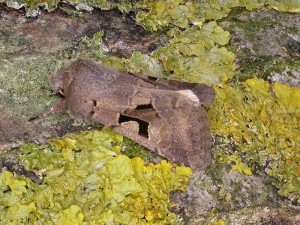<title>Suffolk Moths Blog » Photography</title>
<atom:link href="http://suffolkmoths.org.uk/blog/index.php/category/photography/feed/" rel="self" type="application/rss+xml"/>
<link>http://suffolkmoths.org.uk/blog</link>
<description>Topical information from the Suffolk Moth Group</description>
<lastBuildDate>Thu, 30 Apr 2020 14:24:25 +0000</lastBuildDate>
<language>en-US</language>
<sy:updatePeriod>hourly</sy:updatePeriod>
<sy:updateFrequency>1</sy:updateFrequency>
<generator>https://wordpress.org/?v=3.6.1</generator>
<item>
<title>Going for a song</title>
<link>http://suffolkmoths.org.uk/blog/index.php/2014/11/14/going-for-a-song/</link>
<comments>http://suffolkmoths.org.uk/blog/index.php/2014/11/14/going-for-a-song/#comments</comments>
<pubDate>Fri, 14 Nov 2014 09:06:19 +0000</pubDate>
<dc:creator>Raymond Watson</dc:creator>
<category>
<![CDATA[ Identification Requests ]]>
</category>
<category>
<![CDATA[ Photography ]]>
</category>
<guid isPermaLink="false">http://suffolkmoths.org.uk/blog/?p=5155</guid>
<description>
<![CDATA[ I have upgraded my compound microscope (substantially). I am therefore offering the one I bought from Jon at ALS some 3 years ago for free except that you will have to arrange collection/delivery. Can I encourage anyone to take up … <a href="http://suffolkmoths.org.uk/blog/index.php/2014/11/14/going-for-a-song/">Continue reading <span class="meta-nav">→</span></a> ]]>
</description>
<content:encoded>
<![CDATA[ <p>I have upgraded my compound microscope (substantially). I am therefore offering the one I bought from Jon at ALS some 3 years ago for free except that you will have to arrange collection/delivery.</p>
<p>Can I encourage anyone to take up the dissection of Lepidoptera: confirm your Lesser Common Rustic, Rufous Minor, easily identify all those Coleophora, ‘difficult’ Gelechiids and some of those tricky tortricids? Boost your site list substantially!</p>
<p>Some further outlay is required though. If you do not possess one then a low powered dissecting microscope is required. ALS offers a variety. The one I use is the basic and costs less then £100. You will also need a minimum of equipment and chemicals. Two pairs of extra fine forceps, 3 staining blocks, KOH solution (I leave mine overnight in a flat bottomed glass specimen tube and dissect the following day) and some slides and cover slips. The microscope on offer comes with an attachment to take photographs however this is currently fitted with a ring for a Canon EOS so you may need a ring to fit your camera. If you take photos and don’t keep the slides then you need isopropyl alcohol and euparal essence to get a good quality slide. If you wish to keep the slides you will also need euparal and a slide box.</p>
<p>The dissection process is simple but you can start on larger ones to learn, otherwise I believe Jon does run training days. It just needs a little time during the off season.</p>
<p>Who can I entice? First come first served. Contact by email please or a message on this blog.</p>
]]>
</content:encoded>
<wfw:commentRss>http://suffolkmoths.org.uk/blog/index.php/2014/11/14/going-for-a-song/feed/</wfw:commentRss>
<slash:comments>0</slash:comments>
...</item>
<item>
<title>Image stacking</title>
<link>http://suffolkmoths.org.uk/blog/index.php/2011/03/13/image-stacking/</link>
<comments>http://suffolkmoths.org.uk/blog/index.php/2011/03/13/image-stacking/#comments</comments>
<pubDate>Sun, 13 Mar 2011 11:35:20 +0000</pubDate>
<dc:creator>Tony Prichard</dc:creator>
<category>
<![CDATA[ Photography ]]>
</category>
<guid isPermaLink="false">http://suffolkmoths.org.uk/blog/?p=91</guid>
<description>
<![CDATA[ I was at the BENHS AGM meeting yesterday and they had a talk on digital microphotography covering the use of focus image stacking. This is basically achieved by taking a series of images where various parts of the picture are … <a href="http://suffolkmoths.org.uk/blog/index.php/2011/03/13/image-stacking/">Continue reading <span class="meta-nav">→</span></a> ]]>
</description>
<content:encoded>
<![CDATA[ <p>I was at the BENHS AGM meeting yesterday and they had a talk on digital microphotography covering the use of focus image stacking. This is basically achieved by taking a series of images where various parts of the picture are in focus. Software then merges the sequence of photos together using the parts from each photograph that are in focus to make up a new image. It’s intended as a solution to the problem of lack of depth of field when doing macro-photography.</p>
<p>The dissection group use the software a lot for improving their slide photos but at this talk they were talking about using it for pinned specimens so I thought I’d have a go with a live specimen. Here are the results of my first attempt. Notice that all of the picture is pretty much in focus (click on picture to see full-size image).</p>
<div id="attachment_92" class="wp-caption aligncenter" style="width: 310px"><a href="http://suffolkmoths.org.uk/blog/wp-content/uploads/2011/03/HebrewCharacter.jpg"><img class="size-medium wp-image-92" title="Stacked image of Hebrew Character" src="http://suffolkmoths.org.uk/blog/wp-content/uploads/2011/03/HebrewCharacter-300x225.jpg" alt="Stacked image of Hebrew Character" width="300" height="225" /></a><p class="wp-caption-text">Stacked image of Hebrew Character</p></div>
]]>
</content:encoded>
<wfw:commentRss>http://suffolkmoths.org.uk/blog/index.php/2011/03/13/image-stacking/feed/</wfw:commentRss>
<slash:comments>2</slash:comments>
...</item>
